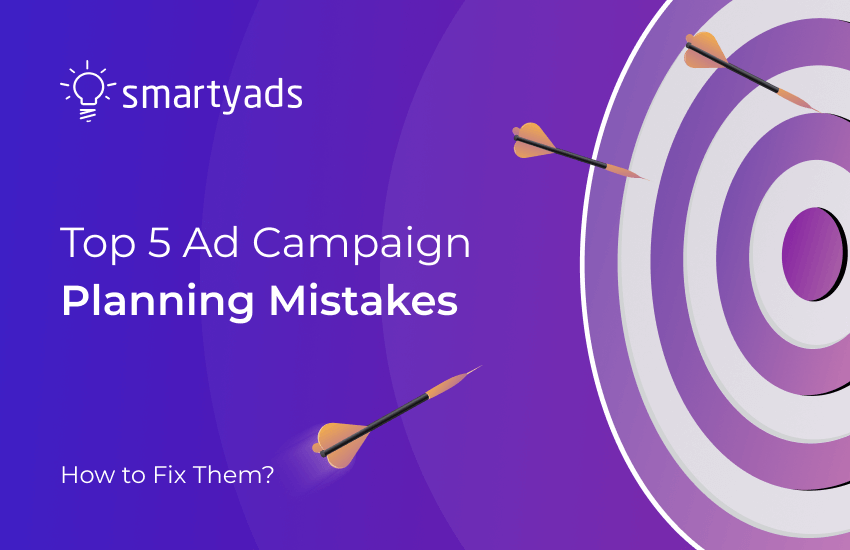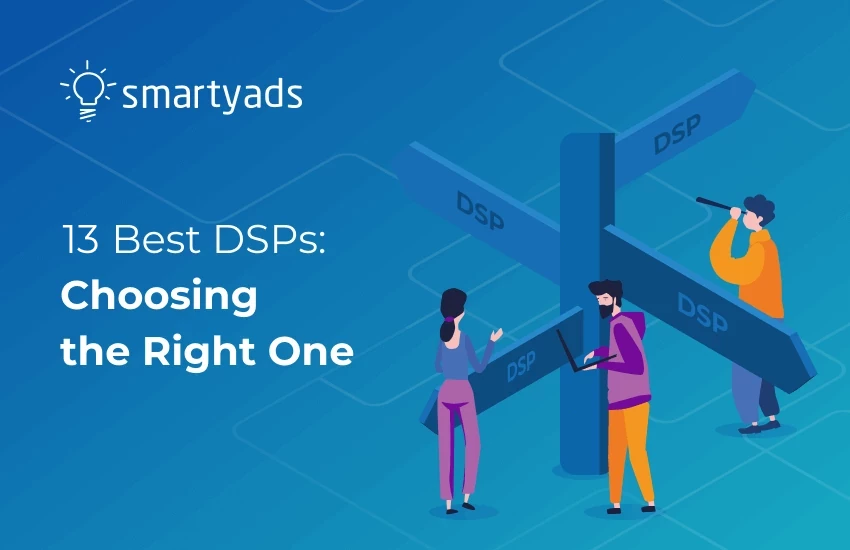Advertising campaign planning is easy to underestimate, especially when you have a smart DSP platfrom by your side. Decision-making AI and ML-powered mechanisms are streamlining all stages of the media-buying process, from determining the relevance of impression to serving it on the right web page or app.
If you are a novice in digital marketing, you may think that aired CPI CPM or PPC campaign is a magic tool that will work as a magnet for sales and visitors. Surely it will, but only if you know who you target, how, and where. No matter what you use for planning your ad campaigns - Google, Facebook or programmatic DSP, it is important to realize that sophisticated technologies won’t propel your campaign far if you have a poor creative, weak strategy and wrongly set targeting or frequency.
If you have a track of unsuccessful ad campaigns under your belt, check these 4 advertising campaign planning steps, maybe you were making these common mistakes?
Mistake one: Prioritizing revenue over the user experience
When your ad budget is large it is hard to avoid the temptation to place ads at every possible webpage. The problem is, many ad units are considered to be intrusive, they interfere with user experience, that’s why Chrome is blocking ads like auto-play videos, and some particularly long mid-roll and pre-rolls.
How to make your ads user-friendly, yet profitable? Diversify your media mix! Don’t stick only to banners, there are plenty of new ad formats that engage users or even entertain them. Bring to the stage popular mobile game ads like playable ads, rewarded, native or video.
Playable ads
Basically, instead of the ad, the watcher tries a mini-game within 20-30 seconds. When the game is over, the player decides whether this game is interesting and if it is worth downloading it to the phone. Needless to say, such a concept is perfect for CPI models as it brings the highly-loyal audience that doesn’t uninstall the app right after downloading.
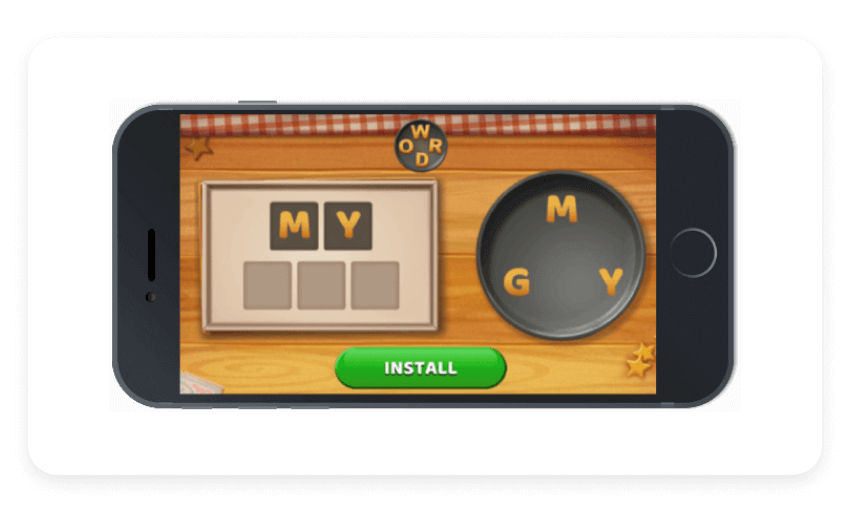
Rewarded ads
Over 70% of users rewarded video ads over app purchases. Statistics don’t lie, - this ad format generates 30% higher engagement than all other formats because it provides additional value. After the ad is complete, the user receives in-game bonuses, free content or music listening hours.

Video ads
There are lots of video ad formats to experiment with: in-stream, interstitials, in-banner videos and interactive formats for in-app. Video formats are 5 times more effective than static ones and can accommodate all information that will never fit in one banner. Plus, they perform well on all mediums: in-app, on desktop, mobile, and connected TV.
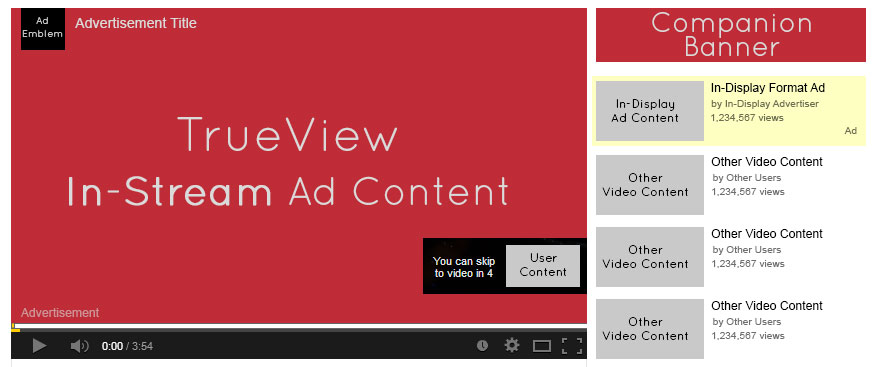
Native ads
Native ad formats are also good for all ecosystems, screens, and platforms. These ads are considered to be the least intrusive ones as they blend in with the rest of the web content and sometimes deliver valuable info while showcasing products or services. Native videos can be very helpful, they can give out valuable tutorials or raise brand awareness through entertaining content.
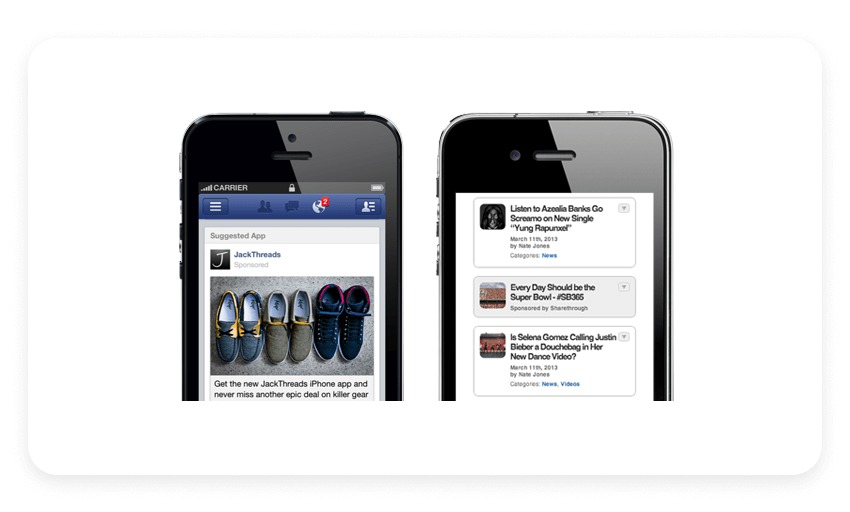
Mistake two: Forgetting about ad campaign frequency
Choosing the frequency of impressions is one of the crucial steps in planning an advertising campaign. By showing the ads to the user too frequently you are risking the brand’s credibility and push your audience to apply ad blockers. If your ads appear at the user screen too often, it may also cause banner blindness. Banner blindness is the reason why only 0.01% of websites generate good ad revenues.
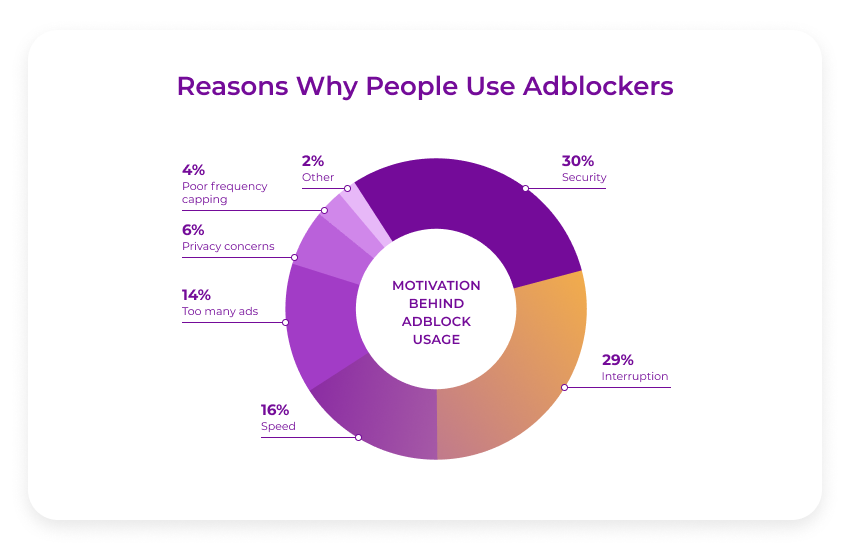
Poor frequency capping, too many ads per day, interruption, and page loading speed are all of those reasons that drive people to set up ad blockers on their devices. So, how to get around ad blockers? The right answer is to set up the right ad frequency that meets your campaign objectives.
Determining your frequency
According to the recommendation given by Google, impression frequency has a formula, and you can use it in order to calculate the number of impressions that will suit your marketing campaigns in particular:
Av. impression frequency = Audience impressions / Unique audience
A frequency set to 1 means that one user will watch your ad only once per day. A frequency set by 2 means they will watch it 2 times per day, 3 means 3 times per day and so on.
Using best frequency practices
If you show ads to your users more than once, it will be a good practice to show them on various gadgets: desktop, in-app, and mobile. For these, you should create several versions of the creative adapted to each environment.
Always calculate the optimal frequency before airing the campaign in order to avoid overserving and undeserving your target audiences.
Big brands with a big target market typically have their ad campaigns most successful with a lower frequency cap (1-2 ads per week) addressing broader audiences. New brands, meanwhile, succeed with shorter campaigns, more narrow audience niches, and higher frequency (works for memorability).
Setting up the right frequency
After you have determined your perfect frequency, you can set it up manually on SmartyAds demand-side platfrom. For this, you need to set up a campaign, choose creative, and then put the number in the frequency field by the user or by IP as described below.
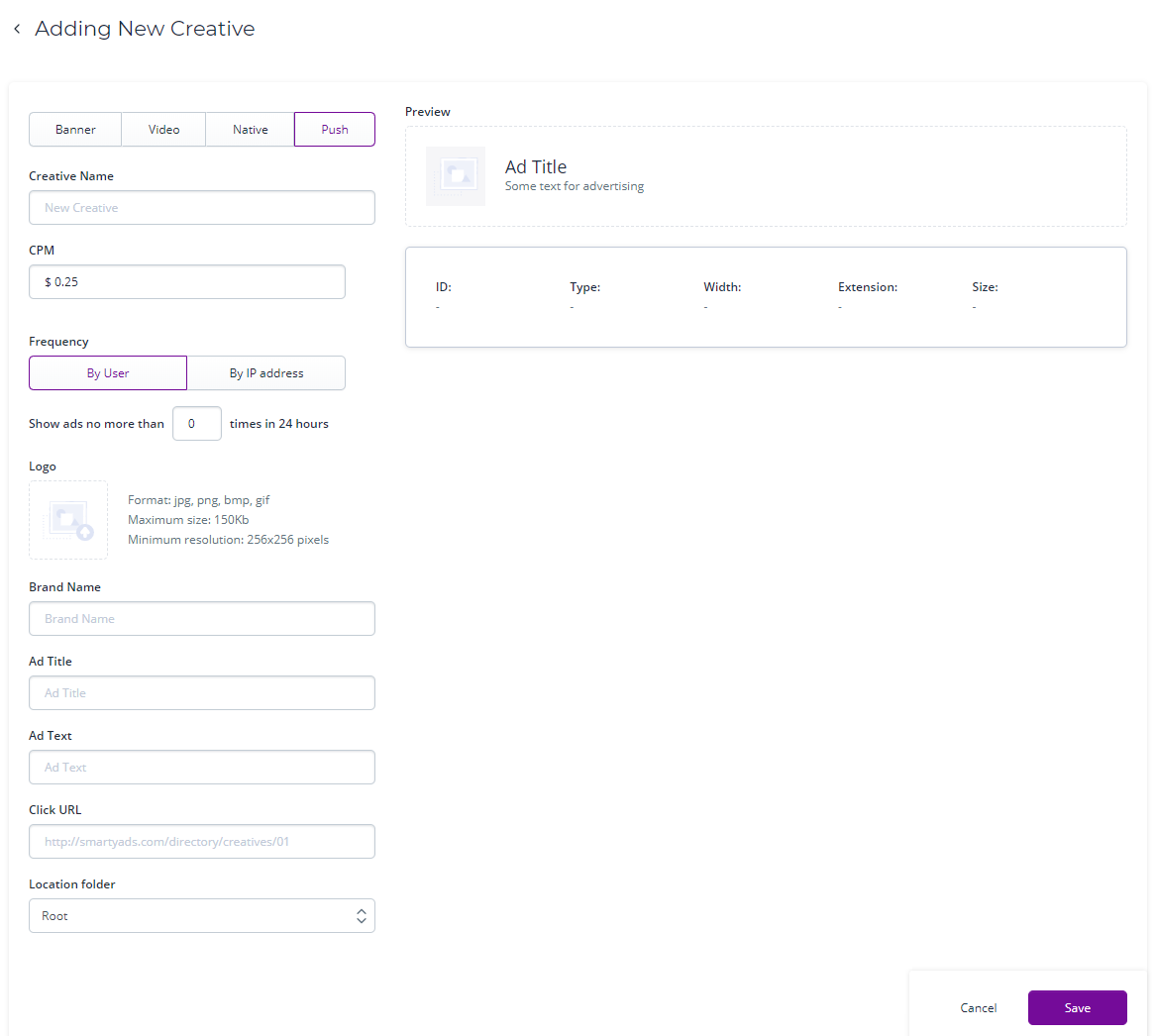
Mistake three: Ignoring targeting steps in planning an advertising campaign
Steps involved in planning an advertising campaign should always include targeting because ‘lazy targeting’ undermines even the strongest marketing strategies. Targeted ads are, on average, twice as effective as non-targeted ones.
Without a correctly identified target audience, you will address the mass audience. Appealing to the mass audience means hitting the attention of users to whom your product or service is irrelevant. In the end, such an advertising campaign will only waste ad budgets. How to make it right?
Define your targeting criteria
Again, everything will depend on your marketing campaign plan. Using targeting functions of advertising platforms, you can appeal to the interests of the audience, reach users based on their age, gender, location, gadget type criteria, and even apply behavioral targeting. For instance, geolocation targeting may be very important for geofencing and geotargeting campaigns and geo-referenced business.
Don’t go too broad or too narrow
Narrowing your audience with correct targeting translates into higher conversions and ROI because you aren’t paying for impressions that will never convert. Still, avoid setting targeting too narrow because your traffic will equally decrease. If no one views or clicks on your ad, it’s probably because your targeting got too narrow.
Setting up targeting on the platform
SmartyAds DSP allows you to define the users who will watch your ads according to the broadest criteria: geo, gender, age, browser, OS, device type, and so forth.
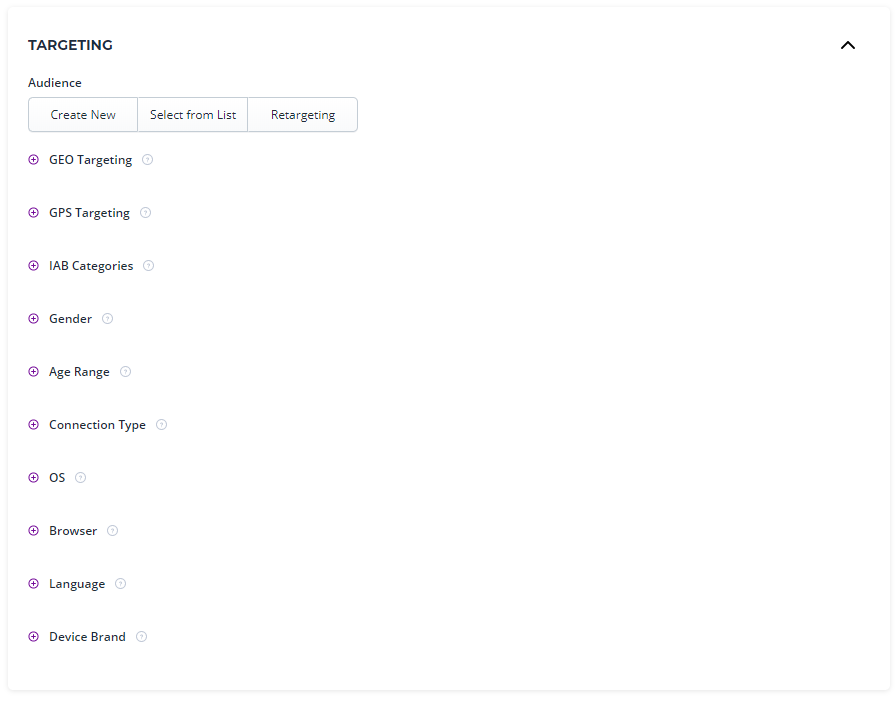
In case you’re not sure how to better target your audiences or don’t know specifics of your target market, start by targeting a wider audience. This way you can determine which users bring you the best results and then use targeting solutions to hit the most profitable audience segments in the future.
Mistake four: Not measuring the effectiveness of your ad campaigns
In order to optimize your campaign properly, it is important to regularly review the performance and analyze how effective your steps were in planning an advertising campaign. For starters, you should realize the initial goal of your ad campaign, whether it is the number of clicks or conversions (for performance campaigns) or the number of impressions served (for brand awareness campaigns).
Use real-time statistics generation
On programmatic platforms like SmartyAds, you can pinpoint the dynamics of your ad campaign flow in real time. All you need is to select an appropriate period to see generated impressions and conversions. Also, you can monitor how your CPM and spend changes inspect your bids and wins.
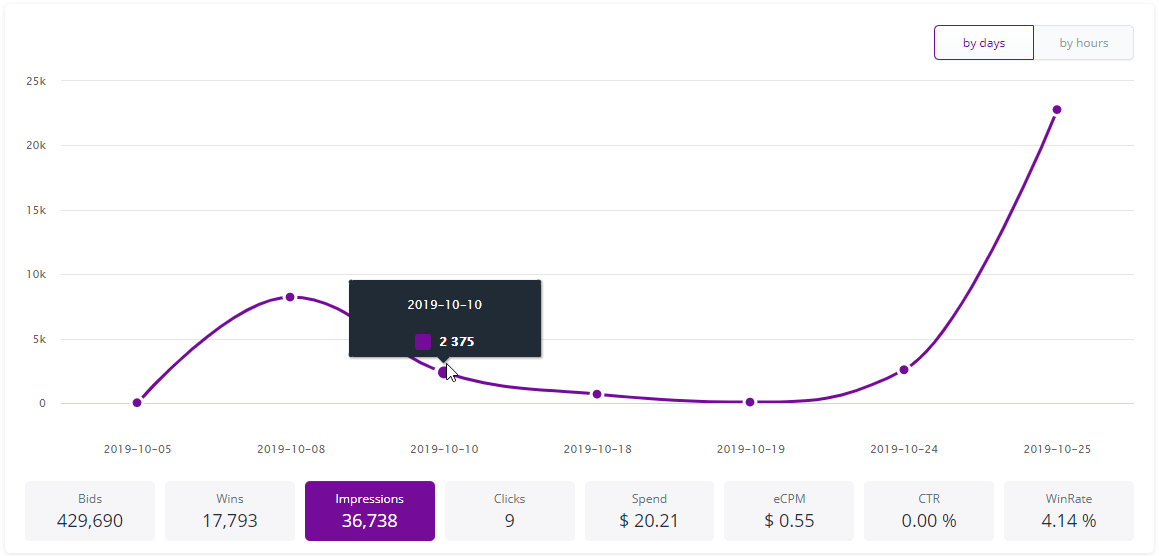
Find out how users interact with creatives
If you start to track signals about user behavior from the site and application using Pixels, you can better understand what actions lead to the conversion. This information will help in decision making and strategy development for your marketing channels. For this, on SmartyAds DSP you can apply third-party impression tracking, as well as Postback for tracking conversions. See how to set it up in the guide.
Mistake five: Setting and forgetting
Automated advertising systems may help you set it and forget it easily. After registering at the platform, the advertiser typically fills out the account, downloads a creative, limits daily budget spend, frequency, and launches a campaign on preferred media channels. Programmatic ad buying systems automatically find the right audiences, make bids, and serve ads to the users. Still, it is important to regularly optimize your campaigns to keep them profitable and avoid overspending.
Optimize campaigns applying the Pareto principle
Optimizing an advertising campaign applies the 80/20 principle. Segment your audiences into categories using such value criteria as generated sales, profits, customer lifetime, etc. Remove the bottom performing 20% from targeting, and subgroup the rest 80% into two categories - the “common” - 80% and the “best'' - 20%. Assess the number of clicks/conversion each group generates. Now set the higher bids for the “best” category.
Use managed service
Same way as you optimize your target audiences, you can optimize ad budgets and then whitelist and blacklist partners according to performance results. In the perfect realms, optimization should be made every few weeks or at least every month. In case this task often falls behind the cracks, it is a sign that you need to ask your provider for managed-serve campaigns. Plus, when you go in-house, you can also hire outsourced advertising sales.
Outcomes
The 5 steps for planning an advertising campaign have one overarching idea: every little thing, like frequency capping or targeting options, can have a crucial effect on campaign performance. Apply varied media mixes across media channels, approach user experience with empathy, and set up targeting and frequency wisely. After this, analyze your campaigns thoroughly to know where you are heading and what optimization tactics to use in the next round.
